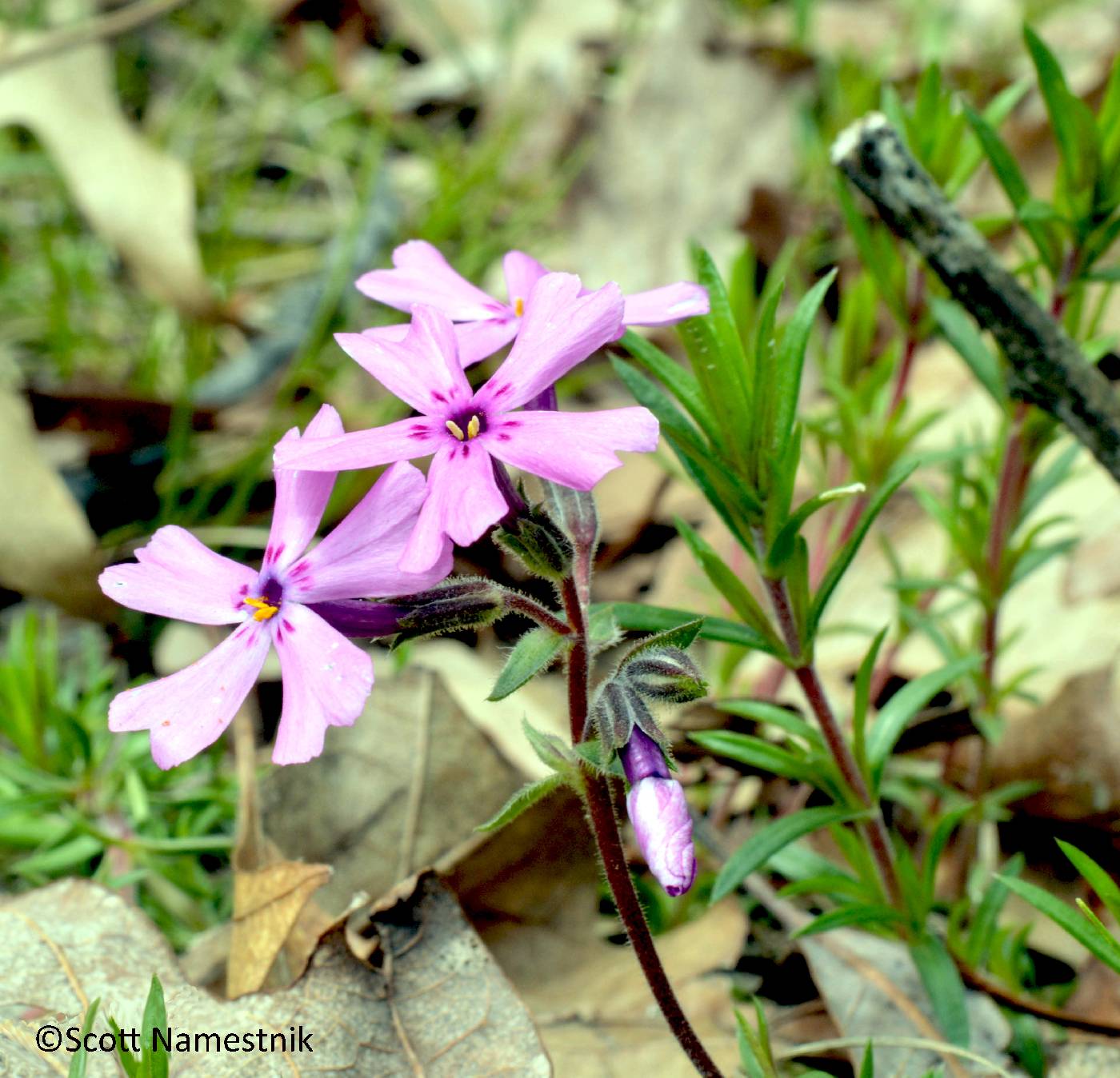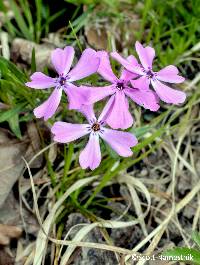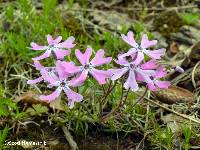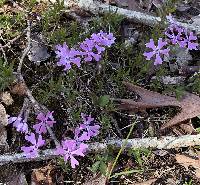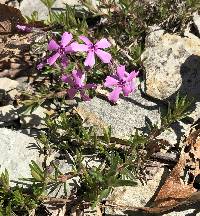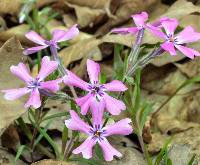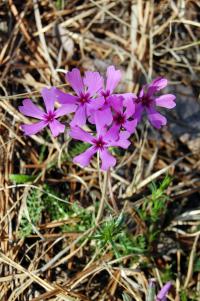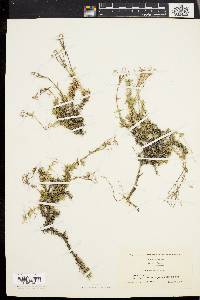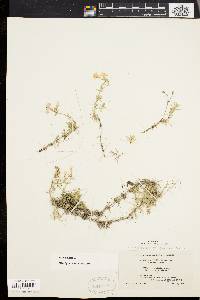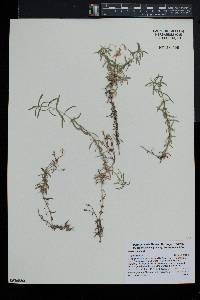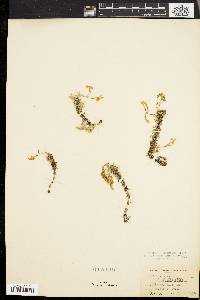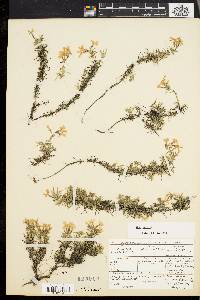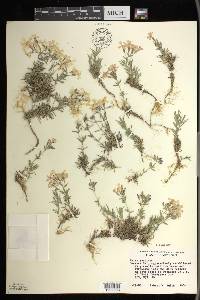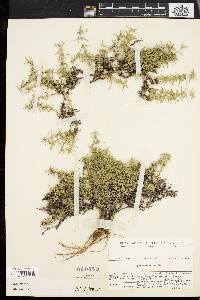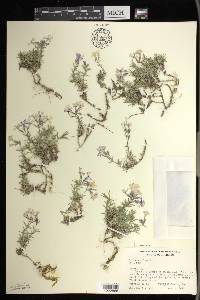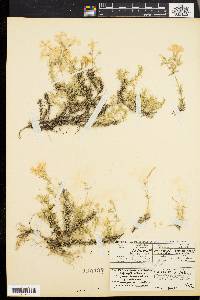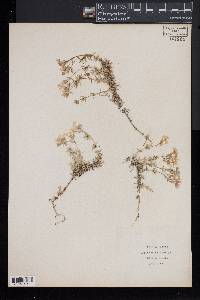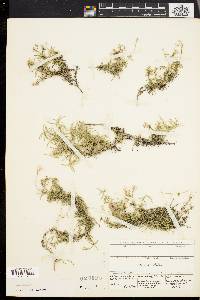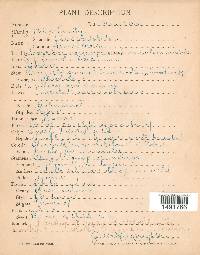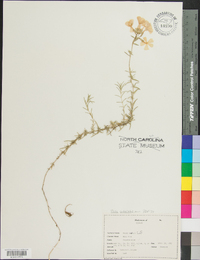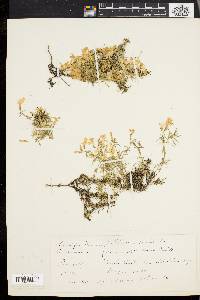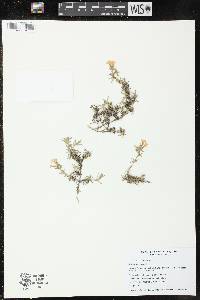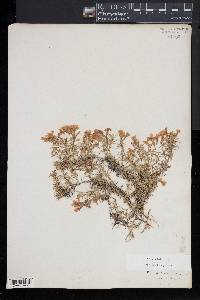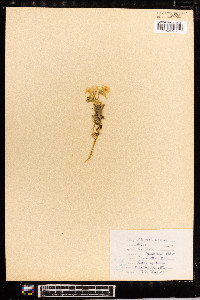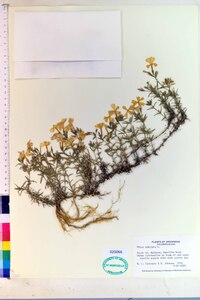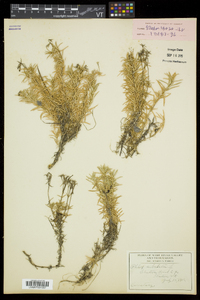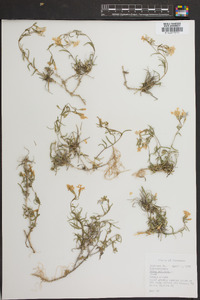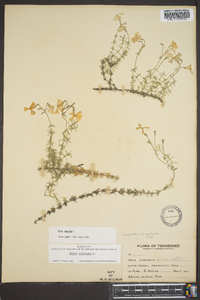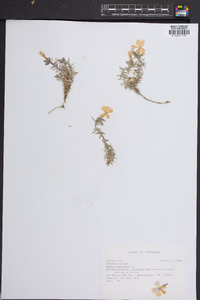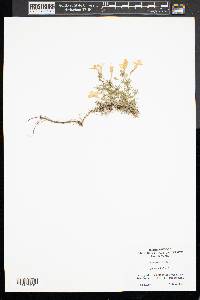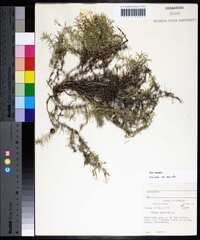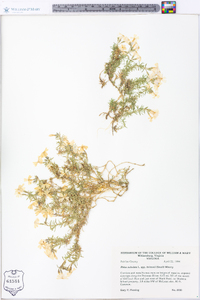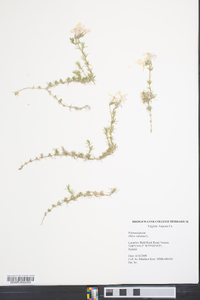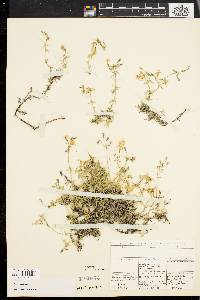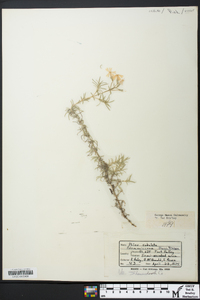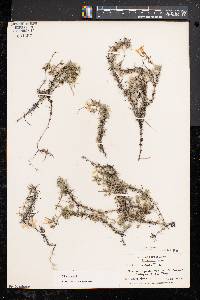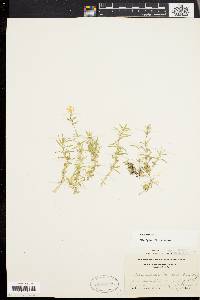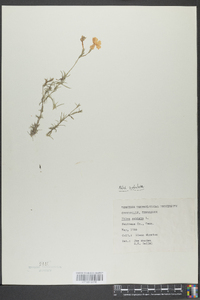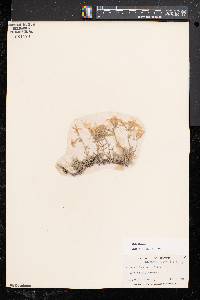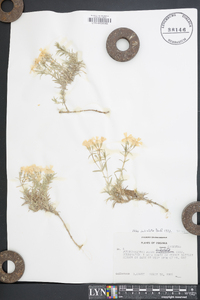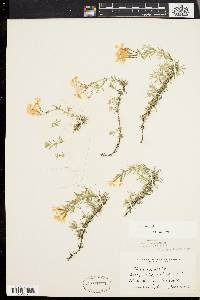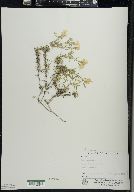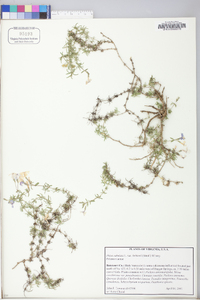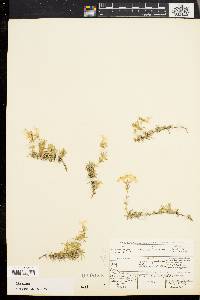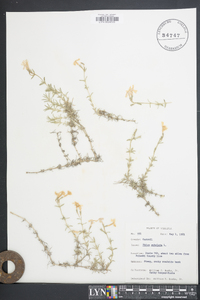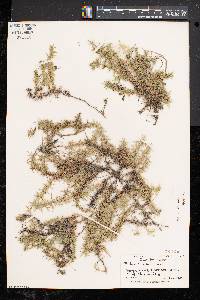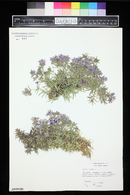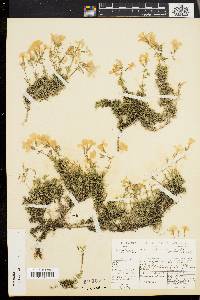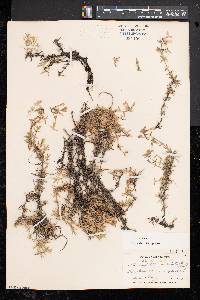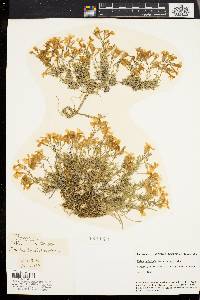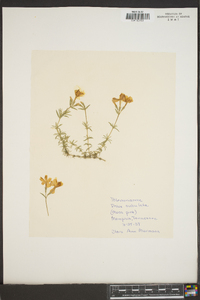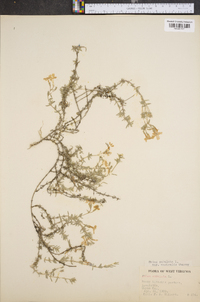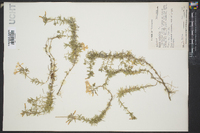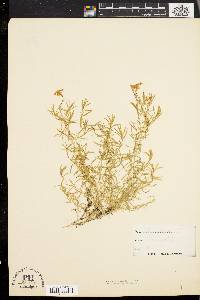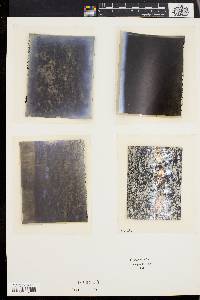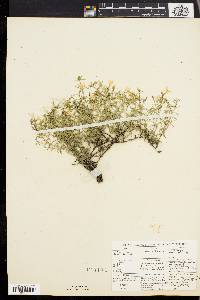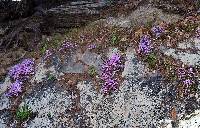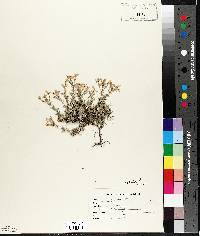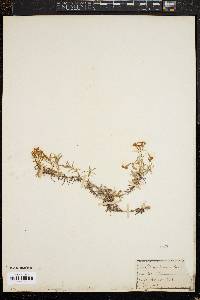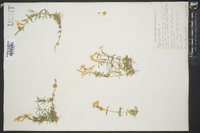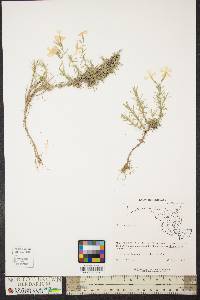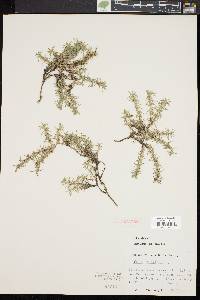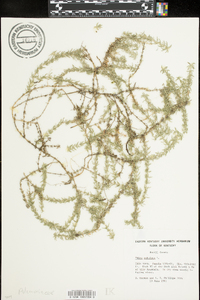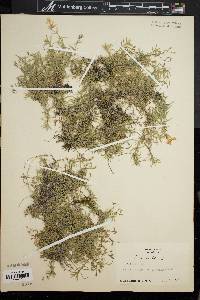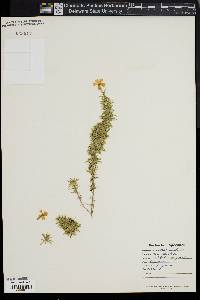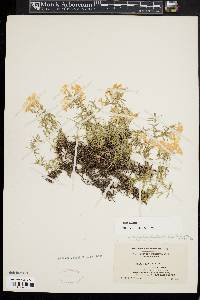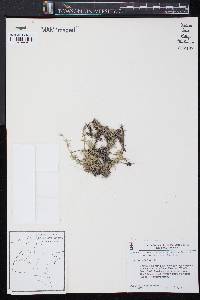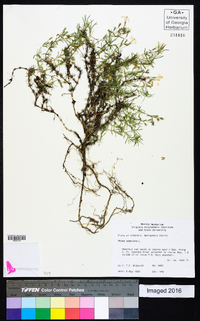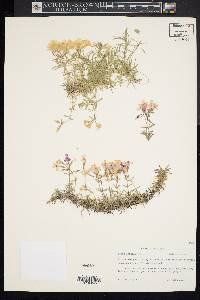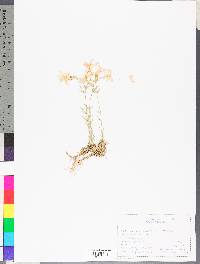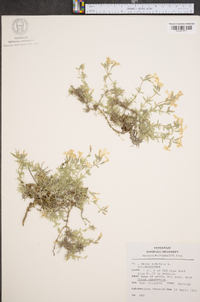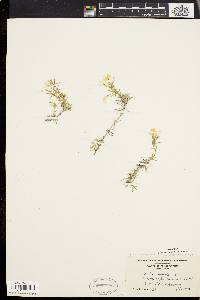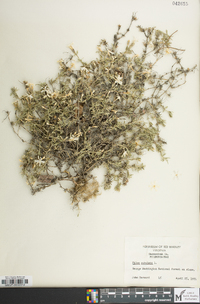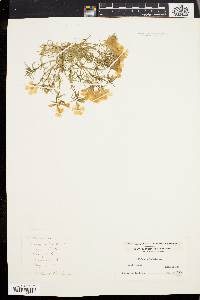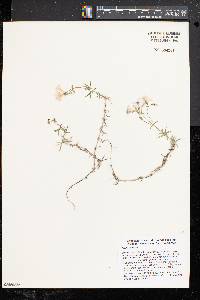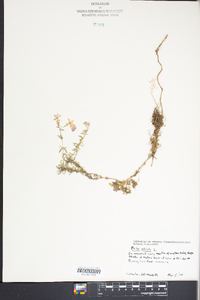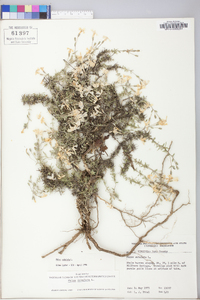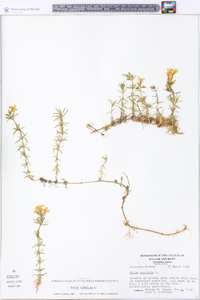
|
|
|
|
Family: Polemoniaceae
Moss Phlox
|
Perennial herb 5 - 20 cm tall Leaves: opposite, stalkless, numerous, crowded, green with pale edges, 0.8 - 2.5 cm long, 1 - 3 mm wide, linear to awl-shaped, with rounded (not flat) edges, which are fringed with delicate, slender bristles to at least the middle of the leaf. The upper leaves are normally covered with soft, non-glandular hairs, though some rare variants may have gland-tipped hairs. Inflorescence: of terminal, hairy (though typically non-glandular), open branches with three to twelve flowers on individual stalks up to 3 cm long. Flowers: normally purple (ranging to red-purple, lilac, pink, or white), 1.2 - 2 cm wide, radially symmetric with a slender tube, and abruptly spreading lobes, which often have a pair of purple stripes at their base (this may blend into a ring of color at the throat of the flower tube). The flower fragrance varies from sweet to somewhat pungent. Sepals: five, soft-hairy, 0.5 - 0.9 cm long overall, but fused for about half their length, then separating into linear or narrowly triangular lobes with long, stiff, pointed tips. Petals: five, but fused into a 0.8 - 1.5 cm long tube, then separating into inversely egg-shaped, 6 - 12 mm long, 3 - 8 mm wide lobes with rounded or shallowly notched (up to 3 mm deep) tips. Stamens: five, with filaments attached at different heights along the inside of the petal tube, and typically partially extended beyond the petal tube. Pistil: with a single, three-chambered, superior ovary; and three, elongate (0.7 - 1.2 cm long, much longer than stigmas or ovary), fused styles, which separate for only about 1 mm before ending in three, linear stigmas. Fruit: a three-valved, three-chambered, egg-shaped capsule with one, 3.5 - 6 mm long, ellipsoid seed per chamber. Sterile stems: colony-forming, trailing or decumbent, densely matted or tufted, with surface-crawling shoots, which are densely, persistently leafy, and produce numerous axillary shoots. Flowering stems: sent up from many nodes, somewhat erect, covered with soft hairs, and having up to six pairs of leaves. Similar species: Phlox subulata is similar to P. bifida ssp. bifida, but that taxon has longer leaves (normally at least 1.5 cm long), which are hairless most of their length; and its petals have much deeper notches on the tips (3 - 7 mm deep, these one-fourth to half the length of the rest of the petal lobe). Phlox nivalis is also superficially very similar, but it has a much shorter style, and the stamens never extend beyond the petal tube. Flowering: mid-April to June Habitat and ecology: Apparently native east and south of the Chicago Region, typically only found in cemeteries where individuals survive from plantings, and often become naturalized. There is some question as to whether a population found in our furthest east county, St. Joseph, Indiana, may be native (see Deam 1940). Occurence in the Chicago region: non-native Notes: The flowers of this species are known to be visited by both butterflies and bee-flies. Author: The Field Museum Perennial by a prostrate suffruticose stem, freely branched and with numerous flowering branches 5-20 cm; lvs numerous and crowded, subulate, mostly 5-20 mm, sharp-pointed, usually ciliate, often with axillary fascicles; cymes few-fld; cor rose-purple to pink or white, 12-20 mm wide, its lobes notched an eighth to a fourth their length; style elongate; 2n=14. Sandy or gravelly soil and rock- ledges; s. N.Y. to s. Mich., s. to the mts. of N.C. and Tenn., and occasionally escaped from cult. as far n. as Me. Apr., May. Var. subulata, without glands in the infl, is northern. (P. ciliata) Var. setacea (L.) Brand, with glandular-hairy infl, is southern, extending n. to s. O. and southernmost Pa. (P. s. var. australis; P. brittonii) Gleason, Henry A. & Cronquist, Arthur J. 1991. Manual of vascular plants of northeastern United States and adjacent Canada. lxxv + 910 pp. ©The New York Botanical Garden. All rights reserved. Used by permission. From Flora of Indiana (1940) by Charles C. Deam This species has been reported from six counties and probably all of them should be regarded as escapes since the natural distribution is mostly to the east of Indiana, and those making the reports do not give the habitat. The St. Joseph County specimen, however, grew along the St. Joseph River and may be native. It has been much used for planting on graves in cemeteries. Since it has proved very hardy and prolific, its escape is to be expected. I found it on a wooded slope along a creek and I traced it back to a cemetery on the bank a short distance away. …… Indiana Coefficient of Conservatism: C = null, non-native Wetland Indicator Status: N/A |
|
|
|

